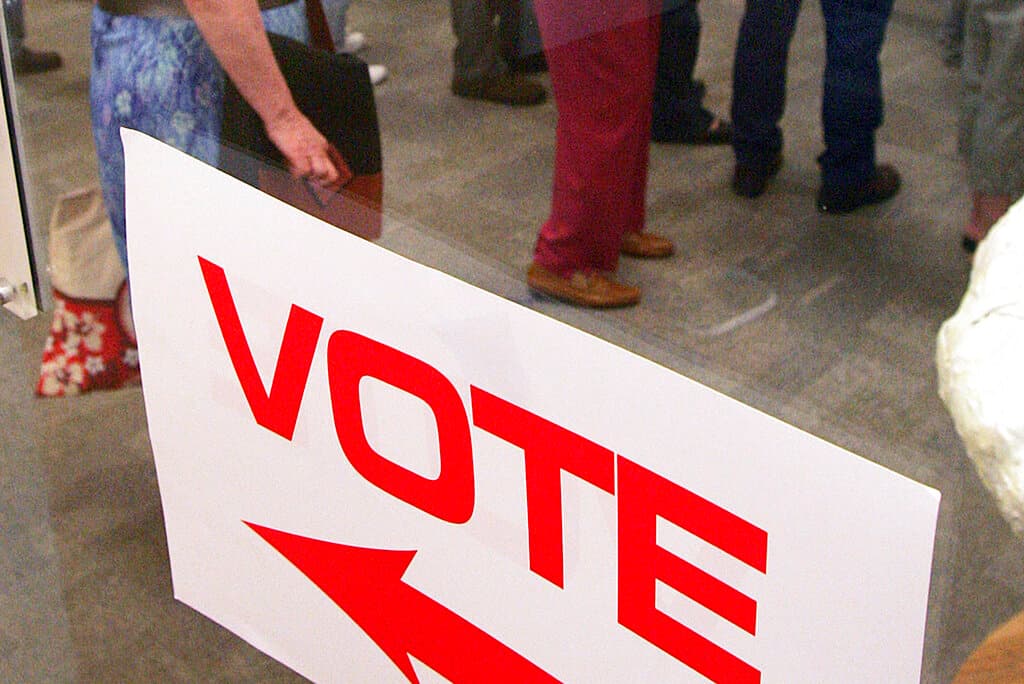Purple Wave: Midterms Shaping Up To Be Less Red Than Expected
The prevailing political winds appear to be blowing in the Democrats’ direction. At least for now.

While the GOP and its supporters continue to promise that the coming midterm election will be a “red wave” for Republicans, recent wins by the Democrats and growing momentum for the party are beginning to muddy the waters, suggesting that 2022 might produce the first “purple wave.”
A “red wave” year in politics generally refers to a sweeping electoral success for Republicans. Likewise, a “blue wave” refers to Democratic dominance. Often, “wave” years happen in midterm elections, with the party not occupying 1600 Pennsylvania Avenue having an advantage.
Republicans are claiming that 2022 will be a red wave along the lines of the 2014 midterms, when Republicans secured the largest congressional majority they had enjoyed since the 1930s — 247 seats in the House and a more modest majority of 54 seats in the Senate.
While Republicans remain favored to take the House, their chances in the Senate don’t look nearly as good as they did in 2014, when the GOP got mired in the traditional summertime doldrums before eventually pulling ahead in September and running away with the race in November.
A political scientist at Hamilton College, Philip Klinker, said the summer months have always been a time of uncertainty in wave election years. He said that while a red wave might very well be coming to the House, the Senate is another story.
“In the Senate those races are much more idiosyncratic, and it comes down to candidates,” Mr. Klinker said. “Republicans seem to have saddled themselves with some really weak candidates this year.”
Mr. Klinkner points to races in Georgia, Ohio, Pennsylvania, and Arizona as competitions where Republicans appear to have nominated candidates that are on track to underperform.
If all four of these states delivered a Democratic victory, it would mean another evenly split Senate — hardly a red wave. Depending on the prevailing political winds, Wisconsin and North Carolina could be in play for the Democrats as well.
Those winds appear to be blowing in the Democrats direction, at least for now.
That’s mainly because of the landmark decision overturning Roe v. Wade, according to a data scientist at Washington University in Saint Louis and Decision Desk HQ, Liberty Vittert.
Ms. Vittert told the Sun that “this would have been a Republican landslide year except that Roe v. Wade could be a chink in the armor.” She added that, “we don’t know enough yet, but it is clear that if it isn’t a landslide, that is why.”
Since the abortion decision, Democrats have been steadily creeping up in the polls, most notably in generic ballot polling, where they are now tied. A massive and unexpected win in favor of abortion rights in Kansas also demonstrated that abortion on the ballot increased turnout.
Mr. Klinker singled out abortion as an issue that Democrats will be able to use to “gin up thier base” and increase turnout, which would usually be low in a midterm election year.
A political sage at the University of Georgia, Charles Bullock, went even further, arguing that the decision in Dobbs v. Jackson Women’s Health might be enough to even make some voters change their minds this November, affecting the outcomes in tight races.
“If it impacts two, three, four percent of the vote among independents who may have tilted for Republicans, that could be enough,” he told the Sun.
Mr. Bullock also identified the January 6 hearings, gun control, and voting rights as issues Democrats could use to drive turnout in November. Falling gas prices, slowing inflation, and solid jobs reports also serve to blunt some of the ire aimed at President Biden’s administration.
Mr. Bullock predicts that Republicans will win a modest majority in the House, and either maintain a 50-50 Senate or slightly expand their majority.
A quick survey of political forecasters supports Mr. Bullock’s prediction. Decision Desk HQ, FiveThirtyEight, and Sabato’s Crystal Ball all give Republicans an advantage in winning control of the House and Democrats an advantage in the Senate.
A special election — which political observers often look to as a bellwether — result from Minnesota’s first congressional district on Tuesday also appears to confirm Mr. Bullock’s narrative. Congressman Bradley Finstad defeated his opponent, Democratic businessman Jefferey Ettinger, by about four points.
The result from Minnesota’s first is significant because the Republican won the district, which President Trump carried by 10 points in 2020, by only four points.
With the unofficial start of campaign season, Labor Day, right around the corner, recent Democratic successes look to be adding a little bit of blue into 2022’s red wave.

